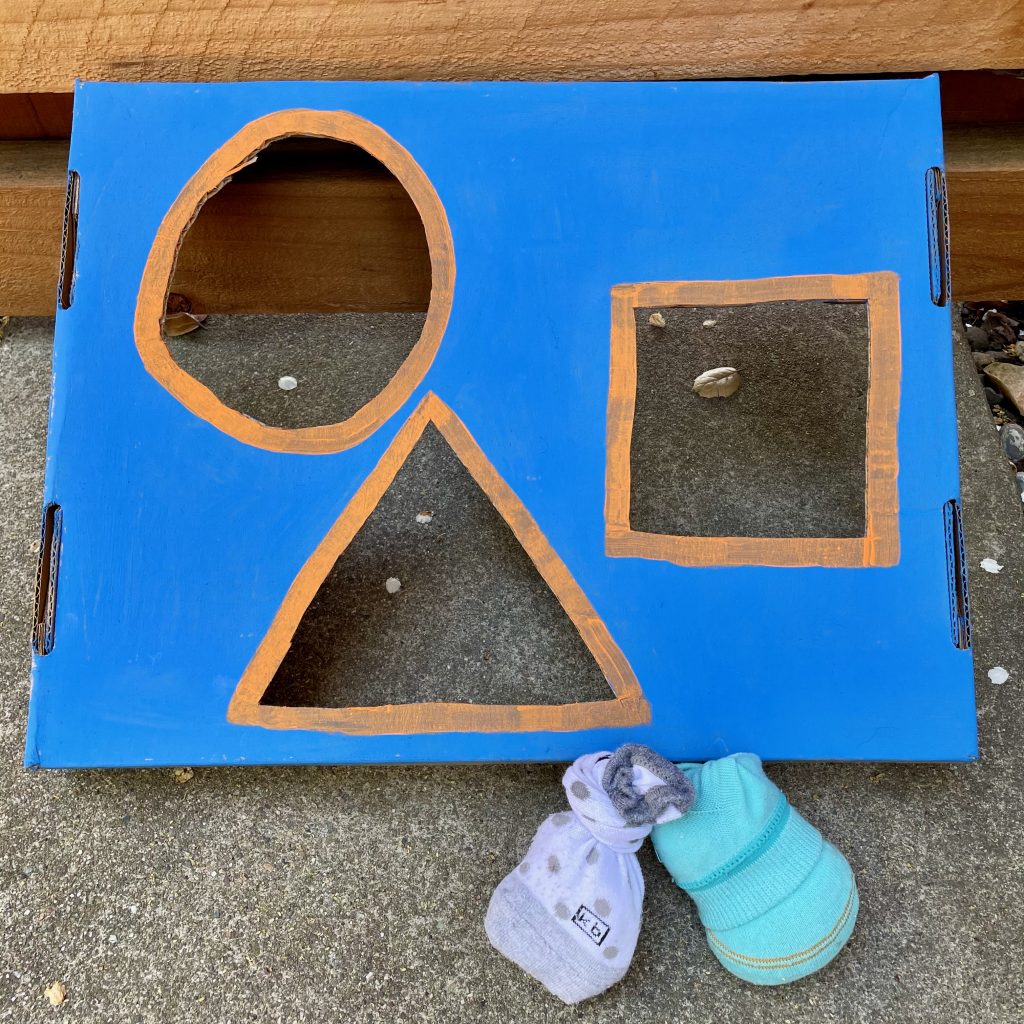
Here’s a fun family project! Once constructed, it gives your child hours of fun, interactivity, and practice with hand-eye coordination. The bean bags and the game board can be made from inexpensive and recyclable materials commonly found around the home.
SAFETY: Please supervise your children when using dry goods like rice, popcorn kernels, and beans that may be choking hazards for young children. Bean bag materials should stay out of mouths, noses, and ears.
Skills We’re Learning
- Gross motor skills – using the large muscles in the arms to toss
- Fine motor skills – using the small muscles in the hands to grasp, scoop, and tie
- Measuring – filling a sock up half-way, and measuring how large the targets should be
- Coordination – aiming and tossing the bean bag at the target on the game board
- Creative reuse – using recyclable materials to create something new and fun
- Building social skills – taking turns and sharing
Creating the Bean Bags
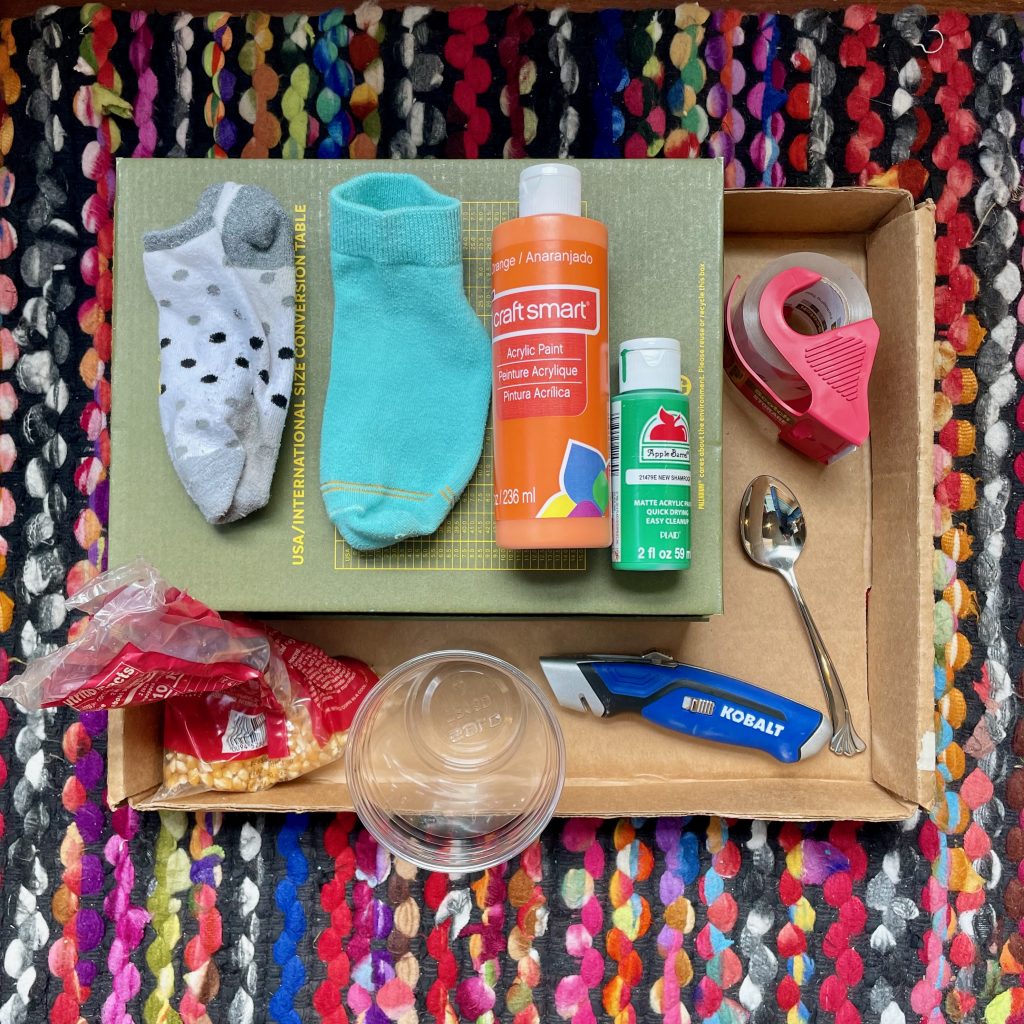
Materials
- 2-4 old socks without holes (youth crew or knee length, or adult crew)
- Filler material: dry goods like rice, popcorn kernels, and beans
- Spoon for scooping
Optional Supplies
- Measuring cup, coffee scooper
- Medium-size mixing bowl
- Plastic cup
- Wide-mouth funnel
Directions
Step 1: Measure out approximately 1-3 cups of filler material for each sock. The amount of filler depends on how large the sock is and how many bean bags you plan to make.
Step 2: To make scooping easier for your child, place all the filler in a mixing bowl. Your child can then use a spoon, a measuring cup, a coffee scooper, or even their hands to scoop up the filler.
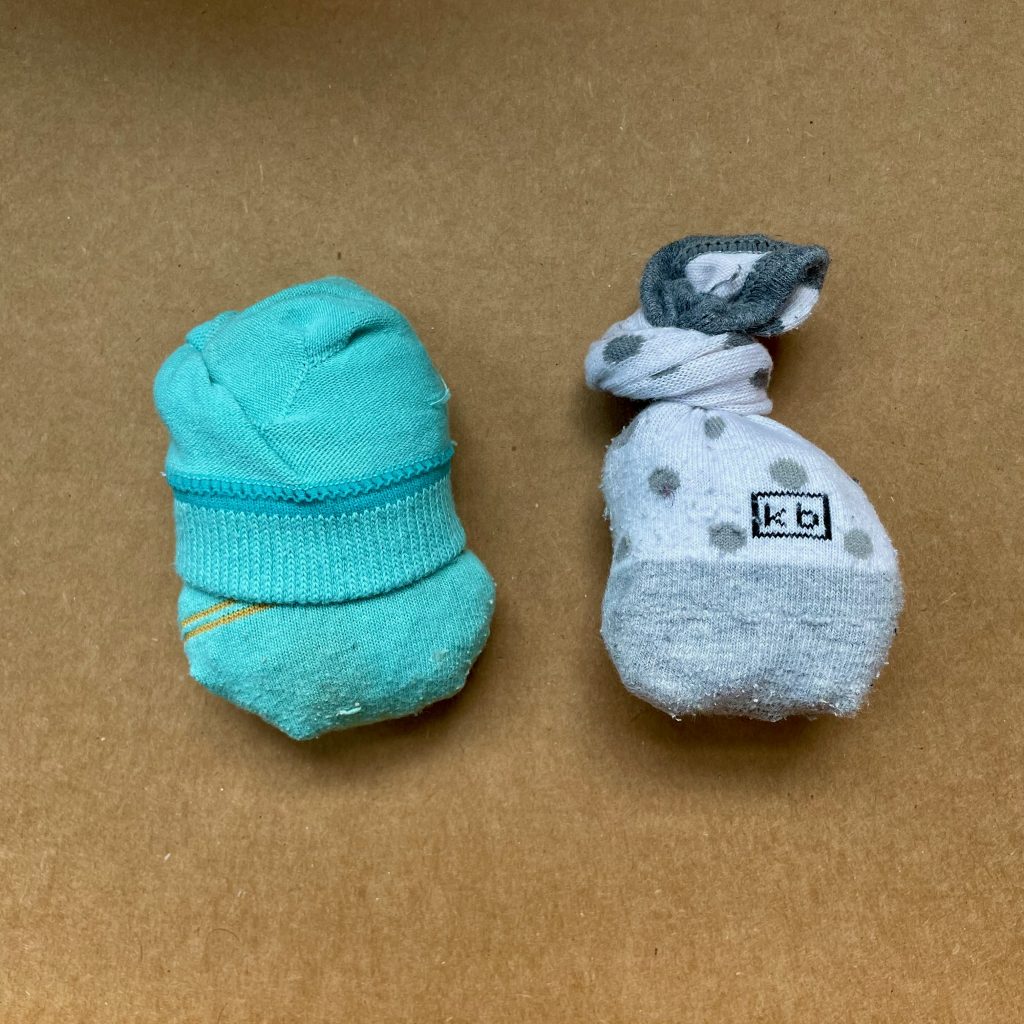
Step 3: Fill each sock about halfway. You or an older child can hold the sock open while your young child scoops the filler in. Alternatively, you can put the toe of the sock into a plastic cup and stretch the top of the sock over the rim of the cup while your child scoops the filler in.
Step 4: Once the sock is filled halfway, you or an older child can tie a knot to close it. It’s best to have the knot fairly close to the filler.
Note: If, for any reason, you choose not to make bean bags, alternative objects that are small, soft, and safe for tossing are balled-up socks, wadded-up paper, small, light plastic balls, or store-bought bean bags.
Creating the Game Board
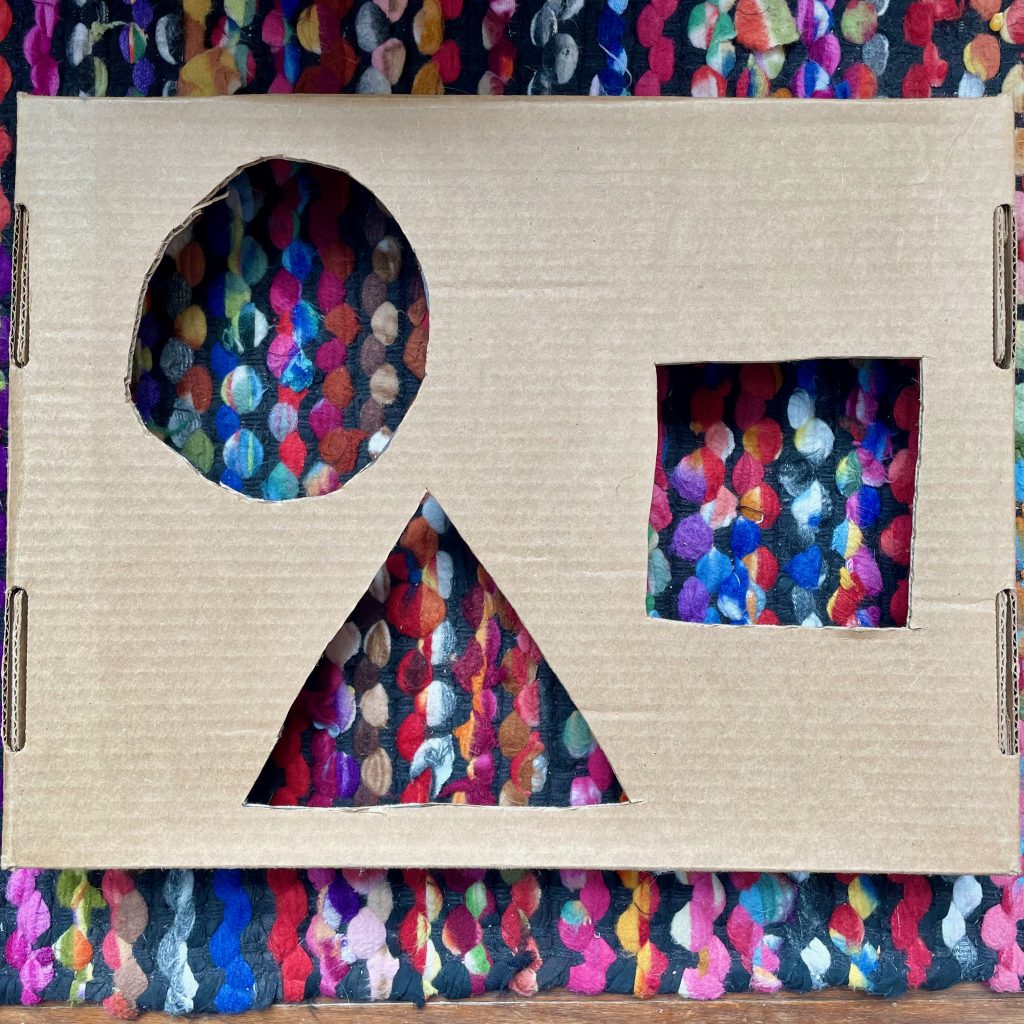
Materials
- Small-to-medium-size cardboard boxes, box lids, or 2-3 shoe boxes
- Marker or pen
- (Adult use only) Box cutter, exacto knife, or scissors
Optional
- Duct tape or packing tape
- Decorative materials such as paint, decorative tape, or stickers
- Objects to prop the board up: bricks, stack of books, sturdy stick, etc.
Directions
Step 1: Choose a small-to-medium-size box, box lid, or a few shoeboxes. Large boxes will work too, but they’ll be harder to set up come playtime.
Step 2: If the box has flaps (an Amazon box, for example), shut the flaps and tape them closed. If you’re using a box lid, it’s best to work on the outside top of the lid, not the inside.
Step 3: Use one of the bean bags (or alternative tossing objects) to see how big the holes on the box need to be. Show your child that the holes need to be a bit wider than the bean bags since the bags need to be able to fit through the hole when tossed. Your child can then trace around the bean bag or other object on the box. As long as they’re big enough, holes can vary in size and shape to prompt experimentation during playtime!
Note: For a medium-size box or lid, 2-3 holes should be ok, depending on the size of the bean bags. A smaller box may only fit 1-2 holes.
Step 4: Adults only – Use a box cutter, an exacto knife, or scissors to cut out the holes.
Step 5: (Optional) Decorate the box! Depending on which decorations are used, it may need time to dry.
Step 6: Repeat steps 2-5 for any other boxes or lids.
Step 7: Once the boxes are ready, set them up outside on the lawn, at a public park, or in your home (away from breakable items.) The boxes can lie flat or they can be propped up at an angle using a brick, a tree trunk, a fence, or a wall.
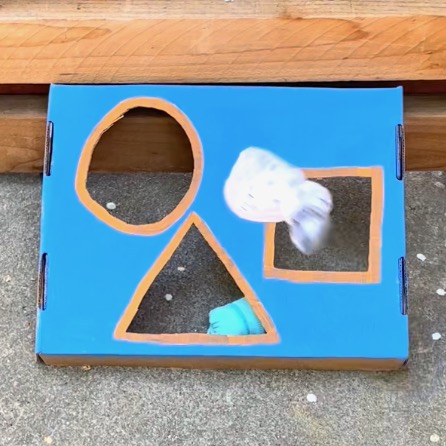
Playing Toss
- Practice tossing bean bags through the holes. Model how it’s done for your child, if necessary.
- Have your child start very close to the game board. When they can consistently get the bean bags through the holes, have them take a step back. Older children (and adults, too!) might enjoy a contest to see who can toss the bean bags through the holes from the farthest away.
- When all the bean bags have been tossed, retrieve them and play again.
- For more challenges, try propping the game board up at different angles. First, try with it flat on the ground, then prop it up at a slightly steeper angle, then even steeper after that. If possible, try to prop the board up at 90 degrees (straight up and down), then try getting the bean bags through the holes.
- If you cut out differently-shaped holes, ask: “Which shape is the easiest one to toss the bags through? Why do you think that is?”
- Experiment with different ways of tossing the bean bags – overhand, underhand, over the shoulder while facing away from the board, or straight up into the air. Ask: “Which one of the tosses works best?
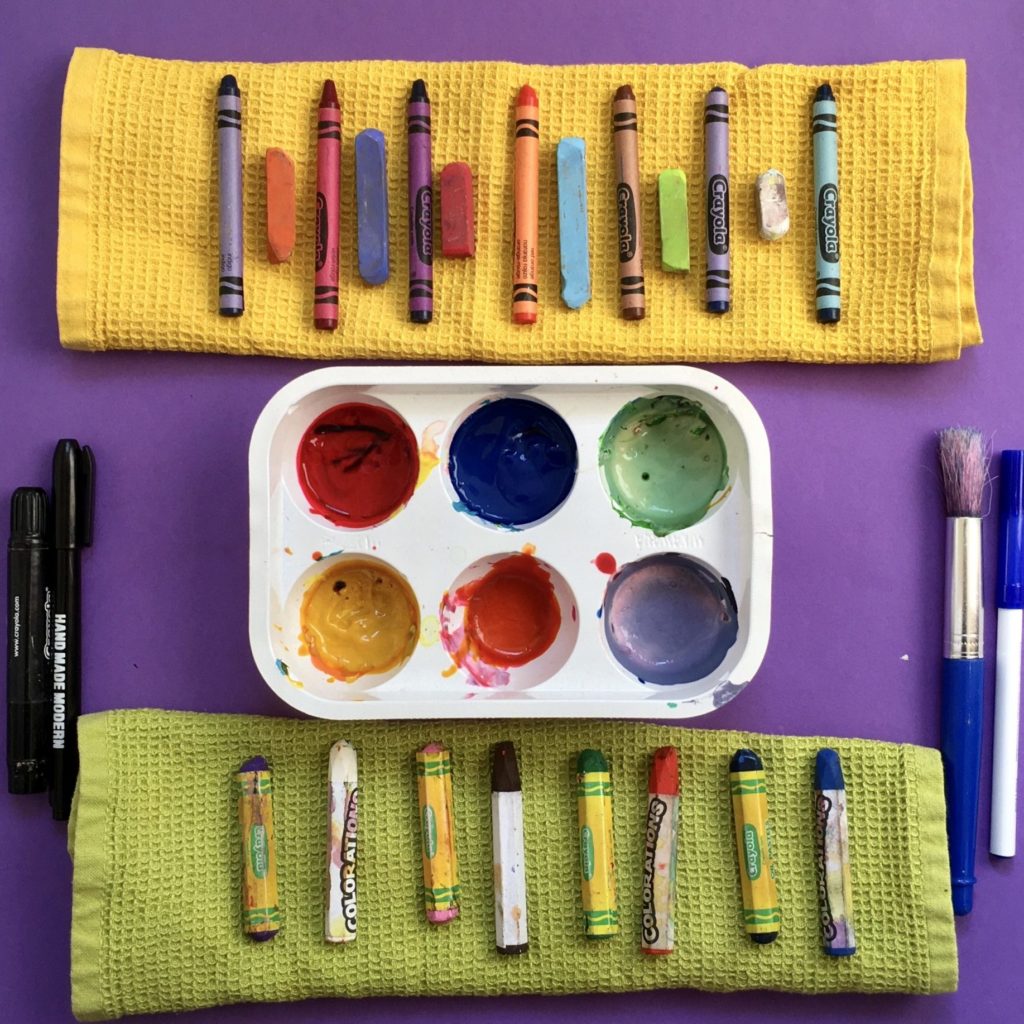
Six-Question Survey
Your feedback will guide our future activities!
Has your family done a Habitot-at-Home activity? We have 6 quick questions for you.
Give Feedback here. Thanks!

